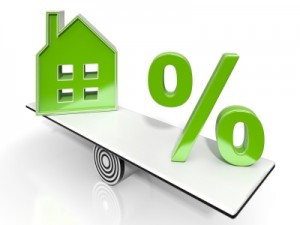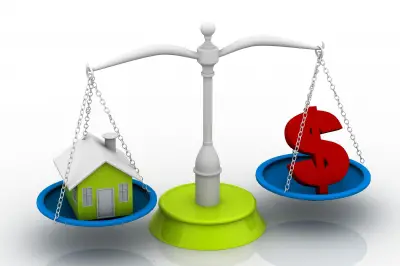If you are considering buying a new home there are a great many wonderful places to do so. Florida still has many areas that are near beautiful beaches and have an abundance of foreclosures for sale putting a lid on prices for the foreseeable future. This allows you to get a roof over your head in a beautiful location at a fraction of the price you would have paid a few years ago. The Las Vegas suburbs still has an abundance of affordable housing so that covers the “hot and humid” and “hot and dry” options if you prefer a cooler option with the possibility of some skiing… Buyers of new homes in Colorado will find a variety of flourishing communities near the magnificent Rocky Mountains. Astute buyers in the rustic big sky region of the nation know that a little planning beforehand will go a long way toward permitting them to obtain more for their money.
 Once you have chosen the location, homeowners looking for ways to pay off their mortgage debt early will encounter no shortage of experts recommending creative ways of doing so. Such strategies all have their strengths and weaknesses, but they all rely upon the same basic concept — reducing the influence of interest on mortgage payments. Since payments early in the life of the loan consist mostly of interest.
Once you have chosen the location, homeowners looking for ways to pay off their mortgage debt early will encounter no shortage of experts recommending creative ways of doing so. Such strategies all have their strengths and weaknesses, but they all rely upon the same basic concept — reducing the influence of interest on mortgage payments. Since payments early in the life of the loan consist mostly of interest.
Consider an Adjustable Rate Mortgage
Fixed rate loans can be characterized as having fixed terms and fixed payments. Making early payments on a fixed rate loan serves to shorten its term but has no other effect. The benefits of paying a fixed rate mortgage early are deferred into the future for many years. An adjustable rate mortgage (ARM) differs from a fix loan in that its future year’s payments are recalculated regularly based on the prevailing interest rate and balance. Making additional principal payments on an ARM loan will cause future payments to be reset lower each year freeing up more money in the budget for making even more principal prepayments. Another advantage of Adjustable mortgages is that they start at a lower interest rate. Fixed rate mortgages are higher because the lender has to cover himself against the possibility that rates will rise during the term of the loan. With an adjustable mortgage the borrower assumes the risk of rising interest rates. The only downside is if interest rates start to climb and your payment increases. The idea is to reduce your principle enough that any future adjustments will be based on a much lower balance so even if rates increase you will still be paying less because the principle is lower.
Choose a 15 or 20 Year Loan Term
If the uncertainty of an adjustable mortgage has you spooked, one way to guarantee that a mortgage will be retired early is to have it underwritten according to a shorter loan term. If 15-year loan term payments seem too steep, consider having a 30-year loan modified to come due in 20 years.
Building Equity Through Mortgage Refinancing
Most people who refinance do so in order to lower their monthly payments. When a borrower takes out a new loan to retire an old one, the new loan balance and payments are almost always lower. These new lower payments create room in the family budget to make one or more extra prepayments possible each year which has the effect of reducing a mortgage balance ahead of schedule.
Pay Mortgage Bi-Weekly
By paying half your mortgage every two weeks you end up making 26 half payments a year which results in 13 monthly payments a year effectively reducing your principal by a whole month’s payment (since there is no additional interest due). This can easily build equity and knock years off your mortgage payment.
Pay Closing Costs out of Personal Assets
The act of refinancing a mortgage exposes the borrower to closing costs. Many borrowers simply roll these costs into the new loan balance. Settling mortgage loan closing costs upfront out of personal assets permits a borrower to start out fresh with an otherwise lower mortgage balance and lower mortgage payments. This makes it possible for the borrower to save many thousands of dollars over the life of the loan.
Use Monetary Windfalls to Make Additional Prepayments
Most wage earners in the U.S. receive an annual tax refund or some kind of work-related monetary bonus each year. For many, the best use of these funds is to make one large extra payment against their mortgage balance. For the average American homeowner, a $3,000 payment applied toward mortgage principal every year can take off as many as nine years from a 30-year mortgage loan.
See Also:
- Bi-Weekly Mortgage Calculator
- Accelerated Payment Mortgage calculator
- 3 Tips for Saving Money on Your First Mortgage
- Your Guide to Home Loan Refinancing
- Mortgage Jargon
- Financial Jargon – Investment Terminology for Beginners
- 5 Good Reasons To Get Title Insurance
- Rebuilding and Fixing Your Credit in 5 Steps
About the Author:
 Brionna Kennedy is native to the Pacific Northwest, growing up in Washington, then moving down to Oregon for college. She enjoys writing on fashion and business, but any subject will do, she loves to learn about new topics. When she isn’t writing, she lives for the outdoors. Oregon has been the perfect setting to indulge her love of kayaking, rock climbing, and hiking.
Brionna Kennedy is native to the Pacific Northwest, growing up in Washington, then moving down to Oregon for college. She enjoys writing on fashion and business, but any subject will do, she loves to learn about new topics. When she isn’t writing, she lives for the outdoors. Oregon has been the perfect setting to indulge her love of kayaking, rock climbing, and hiking.
Image courtesy of Stuart Miles / FreeDigitalPhotos.net”.






